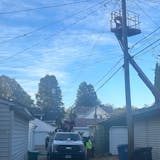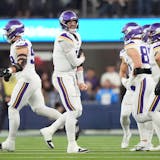Courtesy of the #MeToo movement, special elections are on the way on Feb. 12 (that's right, a Monday) to fill two legislative seats formerly occupied by men who looked for, er, love in the wrong places. Time to check the candidate lineup.
In Senate District 54 in the southeast metro, a former DFL legislator and Washington County commissioner — a woman — and a Libertarian Party newcomer — another woman — will be on the Feb. 12 ballot vying with the winner of this Monday's Republican primary, in which the candidates are two men.
In House District 23B in southwestern Minnesota, a school social worker — a woman — is the DFL candidate, set to take on the winner of the GOP primary, which is another contest between two men.
The gender array on those special-election ballots may be entirely the result of idiosyncratic local circumstances. But — conveniently for us political pattern-seekers — it also aligns neatly with a national trend: a surge in female candidacies, particularly on the Democratic side of the ballot.
Note that I said "particularly," not exclusively. The Minnesota Republican Party may be on the way to offering voters something in 2018 that it has not offered before: a female nominee for the U.S. Senate. Yes, it's early, but no big-name male pol has stepped up to challenge Karin Housley, a two-term state senator, for the Republican nomination for the seat now occupied by Democratic Sen. Tina Smith (also courtesy of #MeToo).
Memo to future Minnesota political/cultural historians: My hunch is that the 2014 Republican ticket for statewide offices was the last all-male lineup of its sort that any major party will offer. That ticket went 0 for 5 on Election Day — which helps explain why Minnesotans won't see its like again.
But Minnesota's female-candidacy wave is larger on the Democratic side. It has been for some time. Consider today's gender division in the Minnesota House, where 50 women give the body an overall 37 percent female share. Of those 50, 21 are Republicans, for 27 percent of the 77-member majority caucus; 28 are DFLers, for a 49-percent share. The 2018 election could make the House DFL caucus the first such body in state legislative history with a female majority.
Nationally, the Center for American Women in Politics at Rutgers University reports that of the 50 women are either running or planning to run for the Senate this year, 31 are Democrats; of the 397 seeking seats in the U.S. House, 317 are Democrats; and of 79 women running for governor, 48 are Democrats. In each instance, the number of women running is up substantially from the previous high-water mark.


